Seeing the Creator by His Creation
Next Part Blurred, Convoluted and Hidden
Back to The Trinity
Back to By David C. Pack
As mentioned, the Bible does trumpet, “…the invisible things of Him from the creation of the world are clearly seen, being understood by the things that are made, even His eternal power and Godhead” (Rom. 1:20). There are patterns in creation that mirror the patterns in the Spirit world. This is also stated in the books of Corinthians and Hebrews. But completely defining aspects of the spirit realm by the physical world is simply not valid.
One can understand how God thinks—or patterns of the spirit world—by the things that are made. For instance, structure-oriented people typically build houses with straight lines and clear rooms. It is their nature to think in that way. Artistically-inclined people would include more angles, spaces and alcoves. This is their nature.
Trinitarian Symbolism

The Equilateral Triangle symbol of the trinity: The three distinct angles combine to make one complete figure.
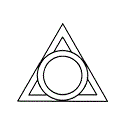
The Circle and Triangle symbol suggests the eternity of the trinity.
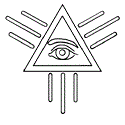
The All-Seeing Eye symbol is supposedly the all-seeing eye of God, looking out from the triangle of the trinity.
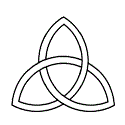
The Triquetra: Early symbol of the trinity. The three equal arcs express an eternity, continuous form, indivisibility in their “interweaving,” and their centre is a triangle—the ancient trinity symbol.

The pagan fish images were interlinked to symbolize the individuals within the trinity.
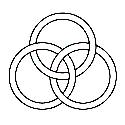
The Three Intertwining Circles: These indicate the doctrine of the equality, unity and coeternal nature of the three persons of the trinity.
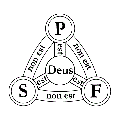
Shield of the trinity: Three curving sides, exactly equal in length, carry the Latin words “is not.” The short straight bands carry the word “is.” The outer circles bear the words “Father,” “Son,” “Holy Spirit,” while the inner circle is “God.”
If we want to understand how God thinks, we can look at His “products.” God is a Creator. So, we can gain insight into His nature by examining what He has created. If you look at the laws of nature, they exemplify precision and structure. There is beauty and elegance in the natural world. We can see that everything has its place to maintain a proper order and balance. This is what can be discerned from creation. However, this is not what is done in the example above. The writer attempts to define God by a law of science—effectively con-straining Him by it.
Describing the beings in the triune god, Nelson’s New Illustrated Bible Dictionary states, “each esteems and defers to the other in a way that makes the original family of the trinity a model for the Christian family of believers in the church…The key to unlocking the mystery of the trinity is to observe how the persons of the triune family give themselves to one another in selfless love. They are always at one another’s disposal. The Father serves the Son; the Son serves the Father; Father and Son defer to the Holy Spirit, who in turn, serves and defers to the Father and Son in a oneness that is eternally dynamic and inexhaustible.”
On the surface, this explanation feels good, because it appeals to love and the family. But if you look at the statement logically, it states that nothing would ever be done by God. If each “person” defers to the other, you create a kind of loop. It would be an ultimate instance of “passing the buck.” Just like a traditional family or any corporation, one person must be in charge. Only one person can lead. In a company, it is the CEO—in a family, it is the husband and father.
Without a leader, no decisions can be made and nothing can ever be accomplished. Creation would not have happened, because, in such a system, nothing would ever be accomplished! If you carefully scrutinize the statements made by theologians, you will see that they appeal to feelings or emotions, not sound logical analysis—and certainly not the soundness of Scripture (II Tim. 1:7)!
This same source goes on to assert that “All the remaining New Testament books [not quoted here] contain Trinity teaching except James and 3 John. The triune family is God’s revelation of Himself as the ultimate truth about reality. This family is the original pattern from which God creates all the families of earth with their unity and diversity. The family of mankind, after losing its intimate relationship with the divine family at the Fall, is restored to fellowship by God’s action. This happens when its members acknowledge the generosity originating in the Father, expressed by the Son, and energized by the Holy Spirit.”
This statement generates many questions, among them: Why is a family known for its diversity? What was “God’s action”? What does the “ultimate truth about reality” mean? Besides the plain falsehood of its opening statement, there is little or no “reality” found anywhere in the statement. In no way does the triune godhead represent the human family. (A later chapter will properly explain how the human family relates to the true Godhead.)
Further, the above quote demonstrates the use of lofty all-encompassing terms and expressions. This appeals to vanity—remember, those who reject God “profess themselves to be wise.” Those who hear such statements do not wish to be thought of as “little thinkers.” Wanting to “get it,” they accept assertions such as the “ultimate truth about reality,” when, in fact, a phrase like this means absolutely nothing!
As we have seen several times, a methodical analysis of these statements shows that they generate many more questions than they supply clear answers. Never permit such statements to mislead you. See them for what they are. Sometimes they are so convoluted one can wonder if they are almost meant to be confusing, meant to be illogical. In the end, most simply give up and accept them, allowing either vanity or fear of seeming unintelligent to drive their thinking.
God commands us to understand who He is. His own words are “prove Me now herewith” (Mal. 3:10). We are also told this in the New Testament. Another translation of I Thessalonians 5:21 is rendered this way: “But examine every thing carefully; hold fast to that which is good” (NASB). Again, “everything” would include correctly identifying the true God from every impostor!

